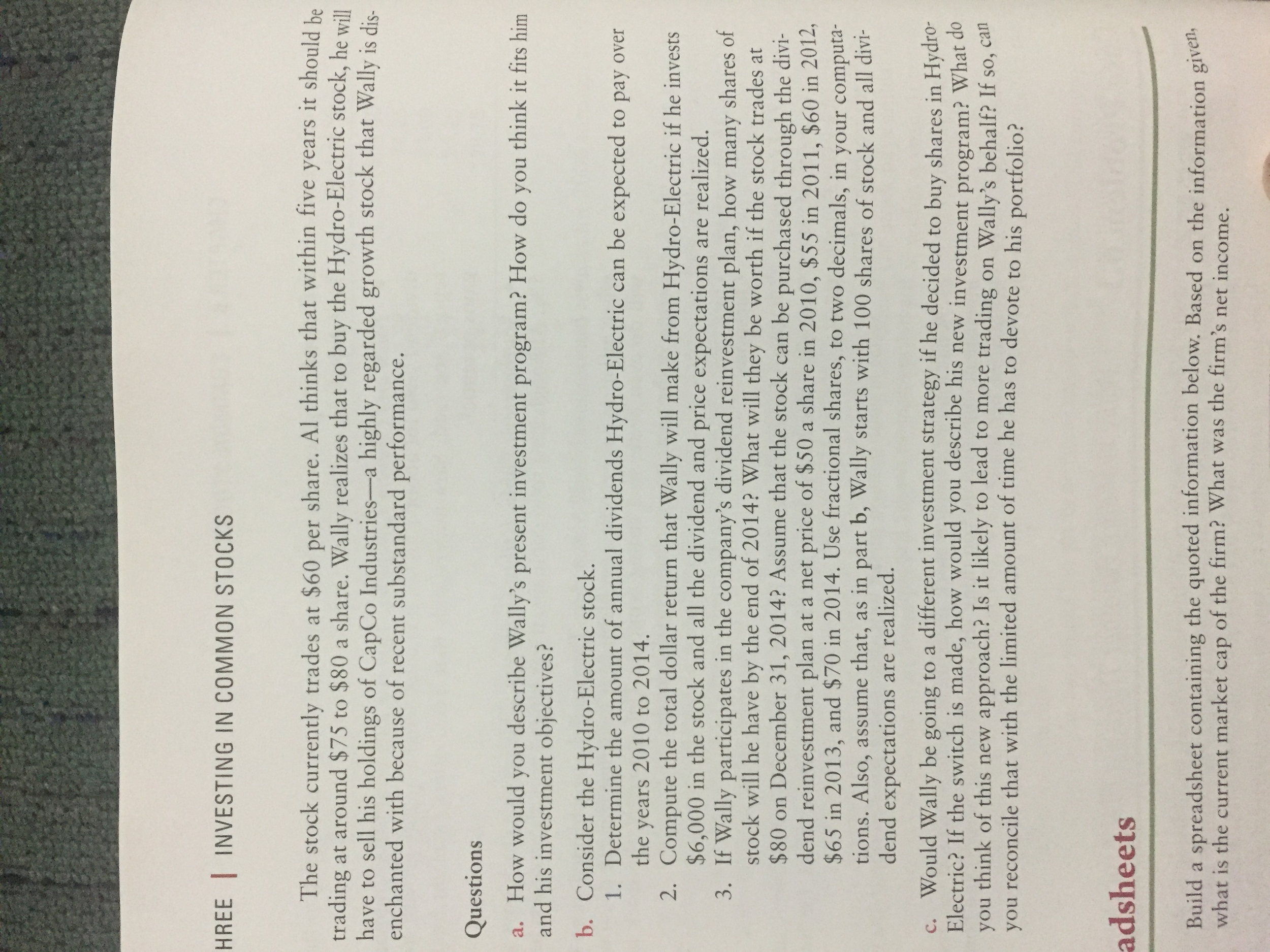a) Wally’s existing plan is one of long-term growth, obtained by investing in quality issues. Given his high income and the limited time he has to devote to his security holdings, this strategy (of quality growth) seems appropriate for him.
(b) 1. Expected dividends for Hydro-Electric:
| Year | (1)
Expected EPS |
(2) Expected Dividend Payout Ratio |
(3) (1) ´ (2) Expected Dividend |
| 2007 | $3.25 | 40% | $1.30 |
| 2008 | 3.40 | 40 | 1.36 |
| 2009 | 3.90 | 45 | 1.76 |
| 2010 | 4.40 | 45 | 1.98 |
| 2011 | 5.00 | 45 | 2.25 |
. Wally could purchase 100 shares of Hydro-Electric stock ($6,000 investment/$60 per share). Expected returns would be a function of dividends and capital gains. First, dividend income
over the five years would be:
| Year | Dividends per Share |
´ | 100 Shares | = | Total |
| 2007 | $1.30 | ´ | 100 | = | $130 |
| 2008 | 1.36 | ´ | 100 | = | 136 |
| 2009 | 1.76 | ´ | 100 | = | 176 |
| 2010 | 1.98 | ´ | 100 | = | 198 |
| 2011 | 2.25 | ´ | 100 | = | 225 |
| Total dividends for 5 years: | $865 | ||||
Now, assuming he can sell the stock for $80 per share in five years, his 100 shares will bring $8,000 and his capital gains would be: $8,000 – $6,000 = $2,000.
Therefore:
Total return = Total dividends + Capital gains
= $865 + $2,000
= $2,865
3. If Wally joins the company’s Dividend Reinvestment Plan, he can obtain shares at reduced prices and hence can achieve his goal of capital appreciation.
Wally will obtain additional shares as follows:
| (1) | (2) | (3) | (4) | (5) | (6) |
| Year | No. of Shares Held at Beginning of Year |
Dividends per Share |
Total Dividends |
Purchase Price per Share |
No. of Shares Purchased (4) + (5) |
| 2007 | 100.00 | $1.30 | $130.00 | $50 | 2.60 |
| 2008 | 102.60 | 1.36 | 139.54 | 55 | 2.54 |
| 2009 | 105.14 | 1.76 | 185.05 | 60 | 3.08 |
| 2010 | 108.22 | 1.98 | 214.28 | 65 | 3.30 |
| 2011 | 111.52 | 2.25 | 250.92 | 70 | 3.58 |
| Number of additional shares purchased through the DRP | 15.10 | ||||
| Number of shares bought originally | 100.00 | ||||
| Total | 115.10 | ||||
Using the Dividend Reinvestment Plan, Wally would have accumulated 15.10 additional shares, for a total of 115.10 shares by the end of 2008. With the stock trading at $80 on December 31, 2011, his shares would be worth 115.10 ´ $80 = $9,208.
Wally would not be going to a different investment strategy if he buys the shares of Hydro-Electric; he would merely be changing the thrust of it. This is a common strategy used by aggressive investors following a long-term growth program. Of course, when conditions change, Wally would go back to investing in long-term growth stocks. In that sense, his trading would be increased. However, since the number of trades should not be too many, this should not be a serious drain on his time.


